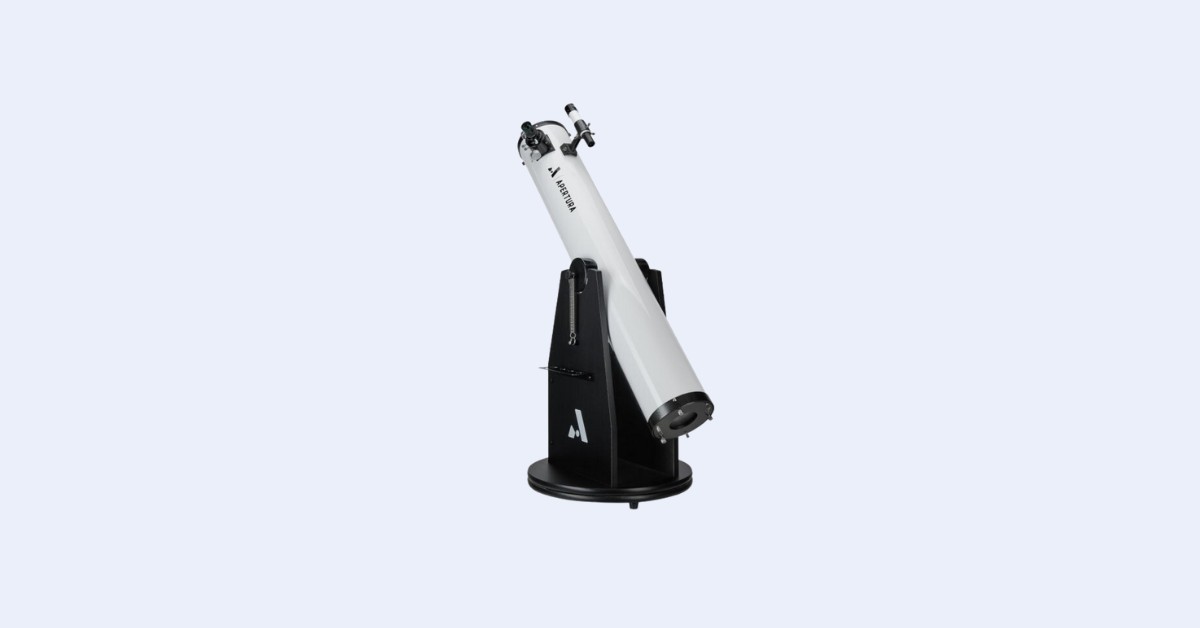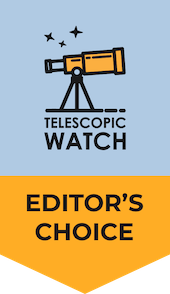The Optical Tube
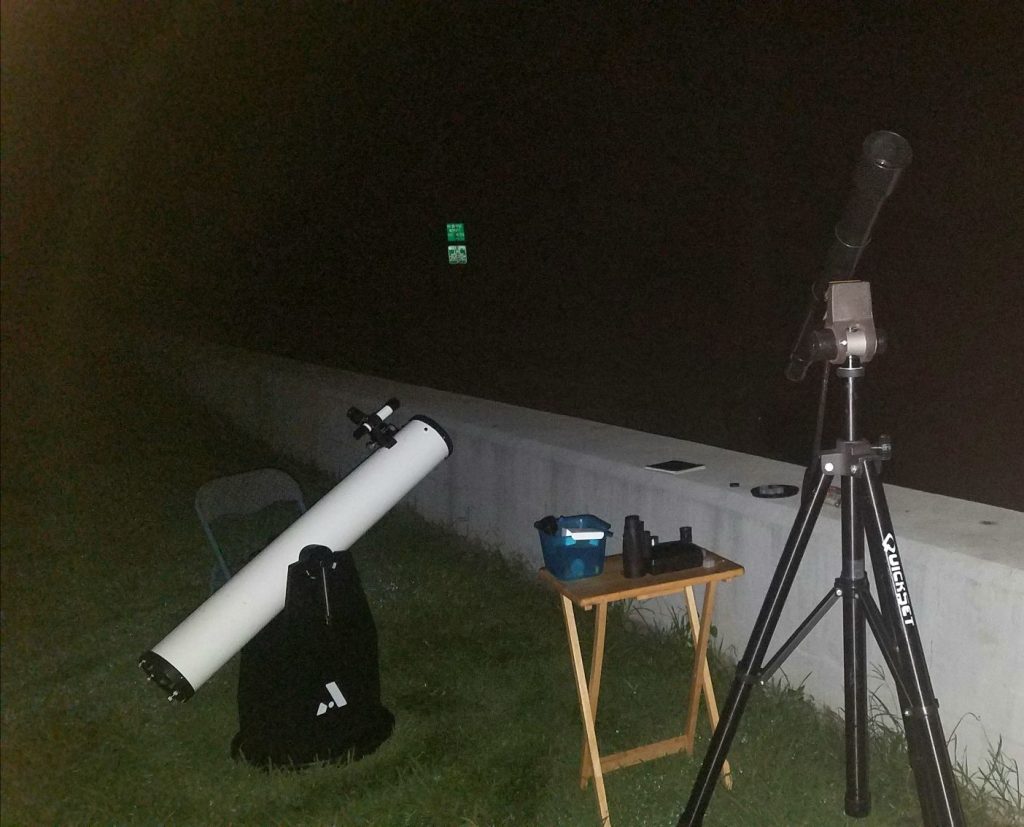

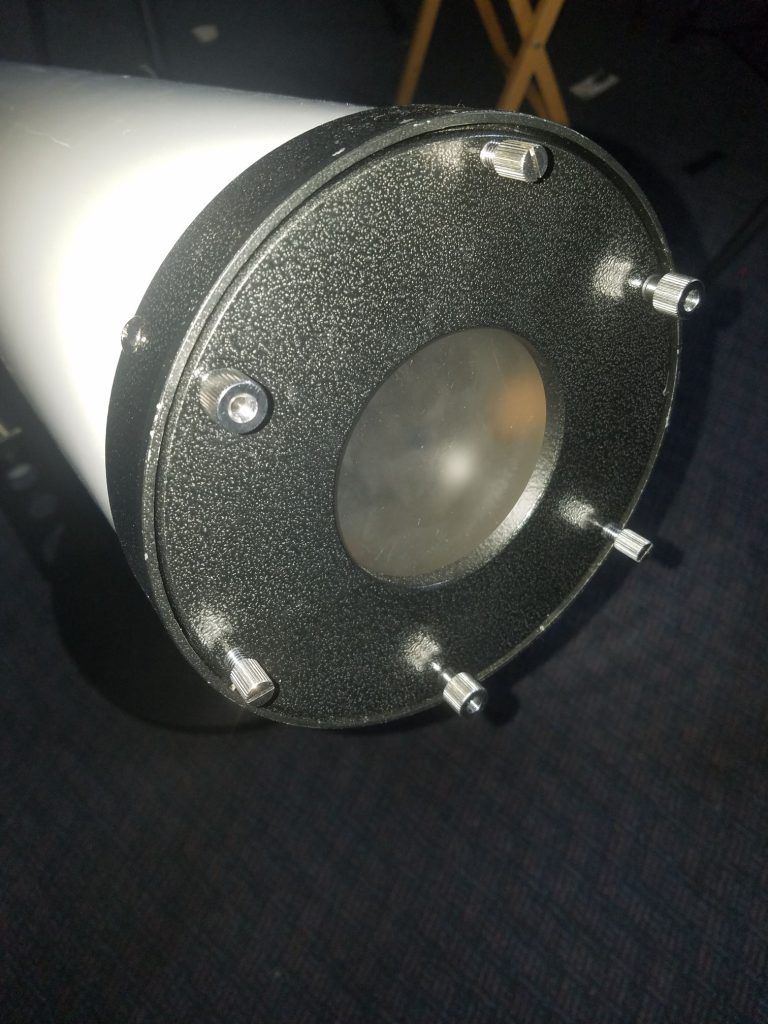
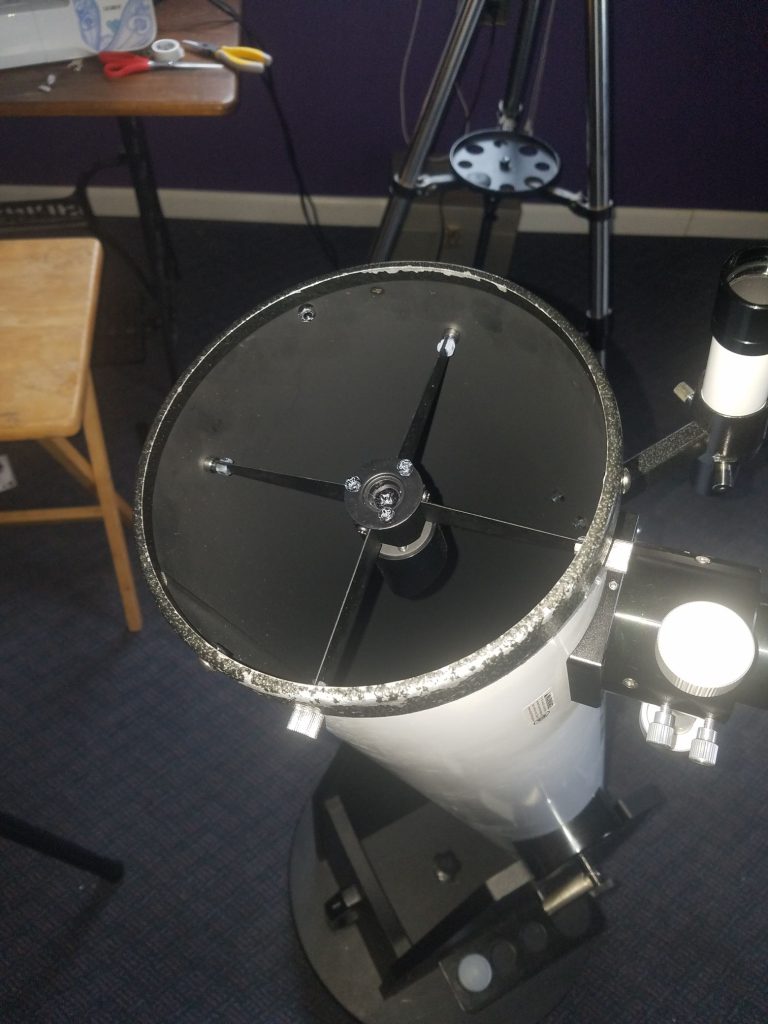
The DT6 is pretty standard among all of the non-tabletop 6” Dobsonians, being a 6” (150mm) f/8 Newtonian with a focal length of 1200 mm. This is the same focal length, approximately, as most of the 8” and 10” Dobsonians on the market as well, which is why we tend to recommend you go larger if you can—the handling characteristics, magnifications with a given eyepiece, etc. are essentially the same.
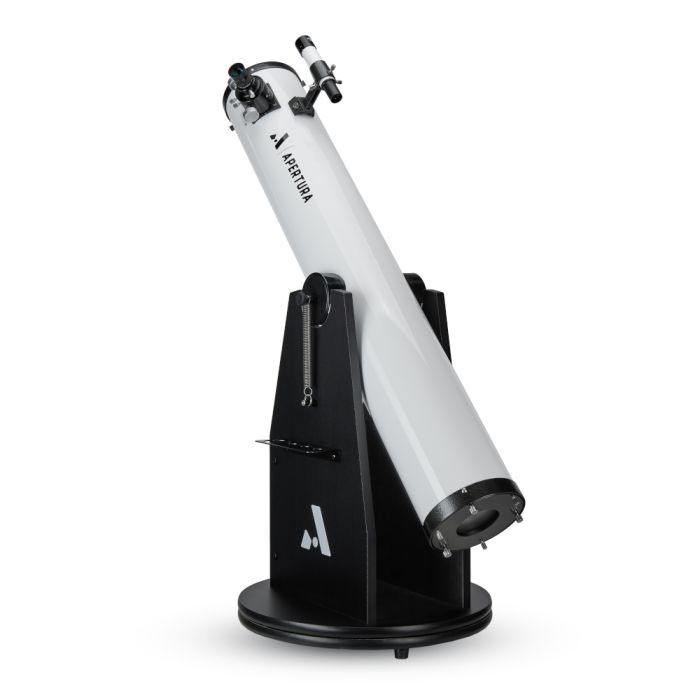
Some people will claim that the DT6’s long focal ratio of f/8 makes it somehow sharper or otherwise better for high magnifications, either due to something inherent in the focal ratio itself or the ease of making a longer mirror. GSO’s mirrors are made on large machines with little human involvement and are consistent in quality across sizes and focal ratios. The idea that longer focal ratios are inherently better is actually a bit of a fallacy. The longer focal ratio makes the depth of focus larger, so precisely focusing the DT6 at higher magnification is easier than precisely focusing, say, the DT8 or DT10 models; this is aided by the DT6’s high-quality Crayford focuser. Collimation tolerances are also a bit easier with the slower focal ratio. However, the main “performance improvement” is that an f/8 telescope is less demanding on eyepieces, and there’s really no need to upgrade the DT6 with anything fancy beyond some relatively modest-priced Plossl and wide-angle designs.
Many of the other 6” Dobsonians on the market, either formerly or in the present day, have used plastic 1.25” rack-and-pinion focusers, or occasionally the odd metal rack-and-pinion. These focusers are kind of fragile, and we wouldn’t say anything nice about them besides that they, well, suffice. Contrast this to the DT6. The DT6’s focuser is an all-metal, single-speed Crayford unit with a brass compression ring to grab your eyepieces. It has adjustments to achieve the right amount of friction, and you can even rotate the focuser to re-orient the knobs if you wish. If anything, it’s overkill.
A 1.25”-only focuser may seem disappointing, especially considering that larger scopes have 2” focusers. However, even with a sufficient focuser, a 2” eyepiece would probably vignette with the DT6 unless you greatly increased the size of the secondary mirror. The weight of the eyepiece would probably upset the balance of the whole scope, and of course, a good 2” eyepiece costs a substantial proportion of what the DT6 does in the first place. So don’t despair; 1.25” eyepieces are really all you’ll need with the DT6.
In my experience, the primary mirror of the DT6 can be collimated effortlessly without tools, though the secondary does require a hex wrench. Don’t be tempted to buy the oft-recommended thumbscrews for the secondary, however-you may never need to adjust it all and all the thumbscrews do is hold collimation more poorly over time and provide a temptation to fiddle with them at every opportunity.
The DT6’s tube fits across the back of most vehicles, and it’s pretty lightweight. If it doesn’t quite fit in your boot/trunk lengthwise, it should be able to go across diagonally without a problem.
Accessories
The DT6, unfortunately, is rather basic when it comes to accessories. There’s only a 6×30 finder, and a lone 1.25”, 25mm Plossl eyepiece providing 48x. Many people are often unfamiliar with telescopes’ ability to interchange eyepieces and vary magnifications and are disappointed by the tiny, impotent planetary views one gets at 48x, thinking this is all the DT6 can do. Don’t despair! Any 1.25” eyepiece will fit in the DT6’s focuser, and you should plan on buying at least one additional eyepiece with the DT6 if it is to be your first telescope.
The included 25mm Plossl is a pretty great eyepiece. You’ll find it’s all you need for finding objects, and for most deep-sky objects, 48x is a pretty sweet spot to be in.
The DT6’s included 6×30 finder scope is a different story. It’s uncomfortable to look through and provides images that are too small and dim to be much of an advantage compared to a zero-power sight. We would probably recommend replacing it with a zero-power reflex sight or upgrading to a larger 50mm finder scope.
Mount
The DT6’s mount is pretty standard among commercial Dobsonians-a big hunk of particle board covered in melamine that serves both to protect the flimsy wood mush and as a bearing surface for the azimuth motion. Teflon pads provide mostly-smooth motion in both altitude (up-down) and azimuth (side-to-side) directions.
Like the Dobsonians provided by Orion, the Apertura DT series Dobsonians use spring tensioning to provide smooth motion and prevent the telescopes from suffering from balance issues with different accessories. These work pretty well, but you do have to remember to secure them when assembling the telescope. The motions are smooth even at the highest magnifications the telescope’s optics can handle.
Should I buy a Used Apertura DT6?
A used DT6 makes for a good telescope, and these telescopes have not been on the market for long, so it’s unlikely you’ll encounter a used one in particularly poor shape. However, our usual recommendations apply: severely damaged primary mirror coatings at this size are probably a showstopper due to the cost of a recoat, so check that the mirrors are in reasonably good shape (a little dust or some scratches are fine and nearly inevitable). A damaged base can be replaced with a new one either directly from Apertura or made out of plywood, but again, this can get expensive quickly.
Alternative Recommendations
The DT6 is one of our favorite picks, but don’t be afraid to rule out alternatives. Every telescope has its own benefits and drawbacks compared to the DT6.
- The Orion SkyLine 6 is literally a repainted DT6 with a 9mm Plossl eyepiece included for high magnification. With the current insanity of telescope availability and prices, it may or may not make sense to get the SkyLine 6 instead of the DT6.
- The Sky-Watcher 6” Traditional Dobsonian is similar to the DT6/SkyLine 6 but with a worse mounting, a 2” focuser that is probably unnecessary, and two included eyepieces instead of one.
- The Orion XT6 is similar to the DT6/SkyLine 6 but with a plastic focuser and a red dot finder instead of a metal Crayford focuser and a 6×30.
- The Sky-Watcher Heritage 150P offers a wider field of view and is more portable than the full-sized 6” f/8 Dobsonians, but is more demanding on eyepieces, requires a table, and really needs a DIY shroud of some sort for its minimalist tube design.
- For more money, there are a variety of 8” and 10” models from the aforementioned manufacturers.
Aftermarket Accessory Recommendations
The DT6 needs, at the bare minimum, a higher magnification eyepiece-something in the 6-9mm range at least. The 6mm “gold-line” and 9mm are a good start-the slow focal ratio of the DT6 means fancier wide-angle eyepieces really aren’t needed. They will provide 200x or 133x respectively with the DT6, which gives you a good pair of magnifications for globular clusters, the Moon, the planets, and tight double stars.
For medium magnification, a 15mm gold-line (80x) will do, but we’d really recommend something nicer. The SVBONY 15mm 70-degree has a wider and slightly sharper field of view, and the 15mm Agena Starguider is better still, if somewhat expensive.
A lower power eyepiece than the included 25mm Plossl may also be a good idea for viewing deep-sky objects. A 40mm Plossl doesn’t actually provide a wider field of view in a 1.25” barrel than a 32mm does, so we’d recommend a 32mm Plossl (37.5x) for the DT6. It’s a bit more optimal for locating and viewing some deep-sky objects than the stock 25mm.
Another item you might want is an ultra-high-contrast nebula filter such as the Orion UltraBlock (make sure to get the 1.25” version). It won’t “filter out light pollution” but it greatly brings up the contrast on many nebulae, which is particularly helpful under light-polluted skies. However, it won’t help on star clusters, galaxies or reflection nebulae, and it doesn’t replace the experience or the views that truly dark night skies will provide.
Lastly, if you’re not a fan of the included 6×30 finder scope, there are a few options to replace it, all with their own advantages and disadvantages. A larger straight-through 9×50 will provide brighter views, but still tends to be uncomfortable and confusing to look through. A right-angle 9×50 solves the discomfort and upside-down views, but it can be really hard to aim in the general vicinity of your target object at first, and it’s rather heavy and expensive.
A Telrad, Rigel Quikfinder or QuInsight is a great solution if you are willing to take more time to learn how to use it, though each has its own advantages or disadvantages. The Telrad is simple and runs on AA batteries, but is bulky and tends to fog up. The Rigel’s reticle is not the best, and it runs on CR2032 batteries that may be difficult to replace in a hurry. The QuInsight is the best finder overall, but it is rather huge for a 6” telescope.
What can you see with Apertura DT6?
A 6” telescope used to be the gold standard for most amateur astronomers. This is for a lot of reasons – a 6” f/8 is quite easy to make for a first-time mirror maker, which was important in the days of largely handmade instruments, an equatorial mount for one wasn’t too inconvenient, and a 6” has just enough aperture to give you more than a brief tour of many deep-sky objects.
The DT6 has been my observing workhorse for almost a year, and we have together viewed many of the bright and interesting objects. A 6” telescope can absolutely do well on deep sky objects, and some of my best ever views of the Pleiades, Andromeda Galaxy, and Orion Nebula have been through the DT6. If you live in the suburbs or darker skies, you will never run out of things to find. I have had a lot of fun chasing deep sky objects, be they brilliant gray structured blobs, or dim patches of slightly paler sky. However, where the DT6 really excels is with the planets. When viewed at a magnification of 150-300x, when the atmosphere is still and the planet is high in the sky, the telescope soaks up detail.
You can also see the moons of Uranus and Neptune, albeit barely, and Pluto is also theoretically possible; while largely uninteresting to look at, these are considered important frontiers by many visual astronomers.
The DT6 has enough aperture to resolve globular clusters, which a smaller instrument simply cannot do. M13, M15, M2, and M3, for instance, transform from fuzzy patches to glittery crystal balls. Each globular cluster has a slightly different shape that’s noticeable even with mediocre viewing conditions – M15 has a very compact core, M13 has its own dust lanes, M92 is slightly out-of-round, and M4 barely looks like a globular cluster at all.
Under dark skies, you’ll also be able to see details in galaxies. The ubiquitous spiral arms of M51 are barely resolvable, while the less-visited M81, M33, and M101 look a bit more exciting. M82’s dust lanes can be seen, as can the gigantic dust lanes of the Andromeda Galaxy, M31, and its two elliptical companions, M110 and M32. The Virgo Cluster of galaxies looks great, and you can see dozens of members.
The DT6 also does a fine job on the brighter nebulae like Orion and the Lagoon. Pop in a nebula filter and you can see the Flame Nebula next to Alnitak, the Rosette Nebula in Monoceros, and the magnificent Veil Nebula in Cygnus, too. And even under light-polluted skies, there’s always an abundance of open clusters and many double stars throughout the sky to view.
Within the Solar System, the DT6 is a powerhouse—provided you equip it with a high-power eyepiece or two. You can see the phases of Mercury and Venus, though don’t expect much more than that with any telescope-Mercury is small and its features are low in contrast, while Venus’ surface is obscured by opaque clouds that rarely show much in the way of detail themselves. The Moon looks magnificent, and you may find yourself spending hours counting craterlets in Clavius, searching for lunar dome volcanoes, or trying to map out the terrain around the lunar south pole, where Artemis astronauts will soon explore. Mars’ ice caps are easily visible, and near opposition, when the planet is closest to Earth, you can also see some dark markings and any dust storms that may occur. With some careful observing tricks, Mars’ outer moon Deimos can be seen.
A 6” telescope is enough to resolve the 4 largest moons of Jupiter –Io, Europa, Ganymede, and Callisto –as obvious tiny disks, and when they transit across Jupiter, you can easily see their shadows. Jupiter itself shows a variety of colorful cloud belts and storms, and you should be able to see the Great Red Spot, too.
Saturn and its rings look magnificent with the DT6, and you can see the Cassini Division within them, too. A few moons are also visible, such as Titan, Rhea, and Tethys. Uranus is a tiny greenish disk; its moons, Titania and Oberon, are theoretically visible but near the limit of the telescope. Neptune’s moon Triton is a bit easier, though Neptune itself is barely distinguishable from a star.
Pluto is at the absolute limit of what the DT6 can pull in, and it’s only getting dimmer as it retreats further from the Sun. You may be able to see it, but distinguishing it from the barely-visible stars surrounding it may be a challenge.

